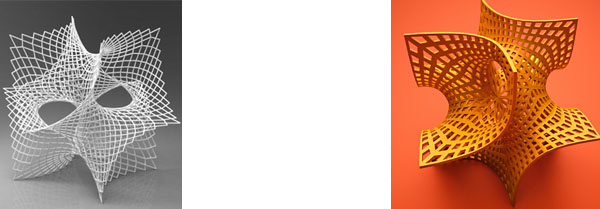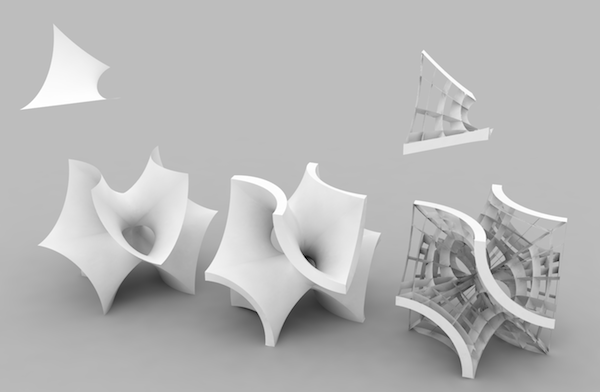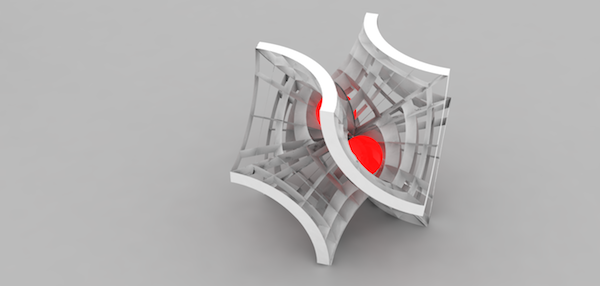FINAL PROJECT PREPARATION
New Idea!
The Concept
I want to make a (cool looking) piece of responsive furniture. This is not something entirely new, in fact, its been done many times before. Such as Meejin Yoon's Light Drift and Rodolphe el-Khoury's Chameleon Lounge.

The Design:
This is where this project gets interesting. I thought, since this class is about making, that it would be exciting to use those fabrication methods to push materials to make shapes that the material doesn't necessarily want to do. And during the 3D printing week, I became very interested in minimal surfaces. While a minimal surface is quite easy to achieve on a small scale with 3D printers, it is much more challenging at a large (furniture) scale, but I want to try.
(image sources: William Schaecher, Shapeways; Torolf Sauermann, Evolution of Genius, Jotero)

In my research I found the Batwing, and I thought that it could make for an interesting 4-person seat (thought perhaps not the most comfortable one). I started trying to figure out how to draw it in rhino (without too much scripting, or math). After some more research, I was able to figure out a pretty simple geometric relationship that basically broke the batwing geometry into a simpler unit surface that can be multiplied and reoriented about itself to generate the surface.

Then I tried to give it thickness and ran into a bunch of problems with the geometry. But I figured those out. Then I tried to make a lattice to approximate the unit surface and I ran into a LOT more problems. I finally managed to generate a lattice that would allow me to CNC the parts.

Then the responsiveness comes in. There are two spaces near the center of the form that perfectly contain a sphere. So I thought it would be cool to cast a hollow sphere out of plastic and put LEDs in it (along with the other circuitry). I would then have sensors imbedded in the seats (ie step response?), which would communicate with the LEDs. I would have to think of a interesting way to respond to the environment (when someone sits, what happens? Does it respond to light, to touch?).

Plan of Action:
This Week:
1/ The Batwing
Process: First laser cut a prototype. CNC approximately 5 sheets of plywood and assemble using primarily.
Cost: Depending on Chris Dewart's generosity, it could be $0 to $200.
Next Week:
2/ The Sphere
Process: CNC mold out of foam. Paint with Gesso. Cast in translucent plastic.
Cost: ~$40
3/ The Electronics
Process: Modella mill circuit board. Use arch lab components. Perhaps purchase my own (high luminosity) LEDs. Use simple sensors such as step response.
Cost: ~$20
Remaining Questions:
1/ The Batwing
- Given the complex geometry, I must first test to make sure it works not just on the computer
- Will it support a person (or four!)? Or will it just be a sculpture (lame)?
2/ The Sphere
- Can I get translucent plastic for casting?
3/ The Electronics
- How do I embed the sensors into the form?
- How do I program the microcontroller?
- How do the sensors communicate with the microcontroller and LEDs?